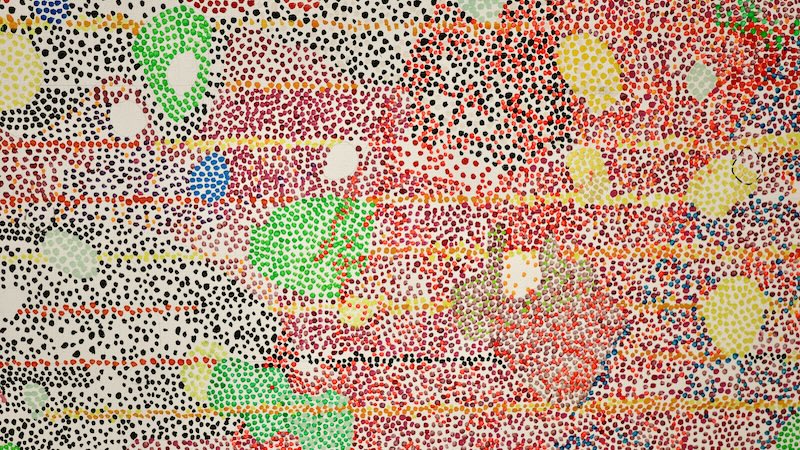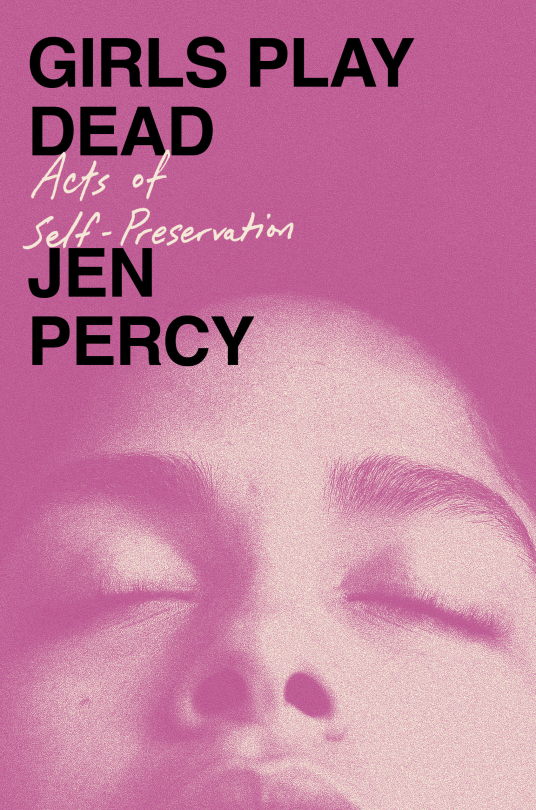
When Form Follows Function
This first appeared in Lit Hub’s Craft of Writing newsletter—sign up here.
Article continues after advertisement
I’m fascinated by form and function. I always want to know if there’s any way structure can support the themes, ideas, or arguments of a text. Can certain structures heighten the reader’s experience or the emotional impact of the writing? Sometimes it’s hard to find a blueprint until you’ve written structurelessly into the void of your material. I can almost never write a beginning until I’ve written most or all of a piece’s content. Knowing what lies ahead gives me the tools I need to set up the beginning in a way that prepares the reader for what’s to come.
Sometimes nothing fancy or extraordinary comes out of this search for form, but for my second book, Girls Play Dead: Acts of Self-Preservation (November 2025), it became essential for the form of the book. I wrote at least one hundred and fifty pages before I stopped to think about structure. Here’s what I found: there was an elliptical quality to the text and unexpected movements, not because of plot, but because of emotional resonance: two ideas brushing up against one another and chiming. And there were so many (many!) voices: women talking, chattering, telling stories they hadn’t had a chance to tell. I let them talk and they just kept talking, they appeared one after another, interrupting each other, pushing for space. Some appeared for just a gasp.
Essential to political writing is finding ways of listening and recording people’s stories that is authentic to how they experience them. And it’s important not to impose an egocentric predetermined form—instead allow the message to determine the best form of transportation.
If I had thought of structuring this book in advance, I would have preemptively deleted most of these voices. I would have thought: there’s no room, or the reader will be confused by fragmentation, or it’s unnecessary because the voices will repeat themselves. I would have shaped chapters into more traditional profiles and extended the amount of time we spent with one individual. But instead, I decided to sit with the content and reflect.
My book explores the way trauma changes our relationship to storytelling and the absurd and often unbelievable ways our bodies respond to fear. Society has conditioned us to imagine active resistance is the most common response to terror but my book focuses on freezing and passivity as an underappreciated creative survival strategy. It expands and complicates the questions around why women aren’t believed. The women in the book tell stories that would normally be dismissed as strange or unbelievable. I asked: What does patriarchal culture prize that a multiplicity of fragmented voices could push against? Was there anything in the content of these stories that made it important to hold onto their multiplicity?
I thought back to my early reporting and my approach—each conversation revealed a thread that led to the next section or chapter. I couldn’t have imagined the incredible range of fear responses that victims would eventually reveal to me—I simply had to talk to people and listen and wait. I also didn’t “audition” characters or dismiss certain stories because I knew that in real life you shouldn’t really get to pick and choose what stories you hear or don’t hear. Shouldn’t we be ready for all kinds of stories, not just one? Not only did multiplicity mimic the most successful kind of justice we’ve seen so far for sexual assault victims but my reporting revealed that collective storytelling and community was almost always a means to heal and escape. It was multiplicity—the repetition and echoing of it—that eroded stubborn cultural assumptions, like that there is one authoritative perspective or that coherence equals truth.
It’s a structural form of collective agency—a refusal to let voices be singular or ownable. Integrating this sensibility into in the architecture of the book mimicked the content and enacted the desires and creativity of these women at the macro-level. They were informing me how to structure the book, not the other way round. They were controlling the narrative and in turn, I was giving them power.
In Aeschylus’s The Suppliants or Euripides’ Medea the chorus of women stands as witness—voicing sorrow, rage, warning. Writing multiplicity forces a reversal: the crowd, the background, the witnesses become narrators. Feminist writers return again and again to this structure: the chorus style as way to restore the silenced many to traditional texts so often dominated by one (usually male) hero. In Margaret Atwood’s The Penelopiad the maids of The Odyssey speak in a choral voice between Penelope’s sections, mocking epic tradition and inserting marginalized women’s perspectives. Chimamanda Ngozi Adichie’s Half of a Yellow Sun includes scenes where women’s voices blend—the chorus of wartime refugees, gossip, or collective narration of suffering. It’s subversive because history is told not by generals, but by women’s polyphony. It embodies collective knowledge, a distributed consciousness, less likely to be undercut or dismissed. The point isn’t that it’s new but that’s it’s useful. The chorus is both aesthetic and political—it lets literature sound like what history usually suppresses: many women, speaking at once, not waiting to be interpreted.
By sterilizing this aspect of my book, I’d be extinguishing an act of resistance. If I had outlined the book or imposed a structure too early, I would have cut more than half of the voices. And the fact that the structure became political reminds of advice Bret Anthony Johnston once offered at a reading: “Don’t treat the political message like freight and use the story as a smuggling device.” Had I used the message to build by structure and story I would have lost an organic form that did so much to support the themes and ideas of the book in an experiential way.
It’s important be an empathetic listener with a surround sound of voices without prejudging or screening—having the experience of letting a chorus or crowd subsume you. Essential to political writing is finding ways of listening and recording people’s stories that is authentic to how they experience them. And it’s important not to impose an egocentric predetermined form—instead allow the message to determine the best form of transportation. This approach means more work down the line—but if you do this, you’ll often find gifts in the chaos (and by gifts I mean clues as to how to structure a piece). For me, letting women talk unlocked my argument and became not just the architecture of Girls Play Dead, but also its message.
___________________________
Girls Play Dead by Jen Percy is available via Doubleday.

